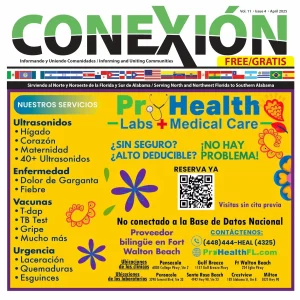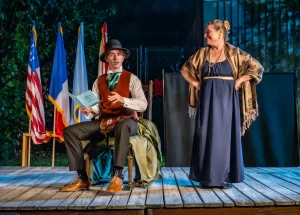United we Triumph – Celebrating our Heritage
By Dr. Maria Pouncey
Why celebrate our Hispanic Heritage? It is our opportunity to share the best of our culture! Although it has its roots beginning in 1968, it has continued due to Public Law 100-402 of 1988, when the United States Congress authorized Hispanic Heritage month and asked that each year the President of the United States make a proclamation designating this period to recognize the contributions that Hispanics have made during our history. Additional reasons were to highlight the rich diversity that our communities maintain and more important, it was to recognize the strong work ethic, focus and commitment to family, and our strong faith. Each year, between September 15 to October 15, Hispanic Heritage is celebrated. During this time it is a great opportunity to share our stories of our ancestors, legends, music, art, the meaning of folkloric dances and without a doubt, how we should maintain our Hispanic pride.
The title is “United We Triumph” – and only in recognizing that while 63% are of Mexicans descent, 10% Puerto Rican, 4% Cuban, 4 % Salvadoran, 3% Dominican, 2% Guatemalan, and 16% of Central American descent, we must realize that together we are Hispanics and it should always be “one for all and all for one”! We have to focus on the latest presidential proclamation which says, “Hispanic Heritage month is to reflect on ways in which Hispanics have contributed to improve our nation and to ensure that the American dream is within the reach of future generations of Hispanics.” Many Hispanic heroes have been examples of what is possible, achieving dreams they never thought were possible – but never giving up. There are 1.2 million Hispanic heroes in the armed forces of the U.S. Together with all their military brothers and sisters, they have risked their lives to insure our freedom; they have stood side-by-side with all Americans regardless of race, language or cultural origin.
Another example of a Hispanic Hero is Alfredo Quinones-Hinojosa, a famous neurosurgeon who came from poverty, undocumented and worked as a migrant worker. Without knowing English, he focused on working hard, learned English, and continued studying to graduate from the prestigious Harvard University, practiced medicine at Johns Hopkins University and is now affiliated with the Mayo Clinic in Jacksonville, FL. Nothing was easy, but he taught us that his effort to study and work hard had positive results. If we want to continue to succeed in the future, we have to encourage our young people to study hard because education is power! Currently only 4.7 million Hispanics age 25 and older have a college degree and only 1.5 million have advanced degrees. There is still work to be done to realize the full potential offered by this great country, it is possible – education is the key to the future! Encourage young people to enjoy all the opportunities that are given. Together and focused on highlighting our rich heritage and encouraging our young people to be the best that they can be will be an affirmation of the title of “United we Triumph”.
Retrieved from U. S. Census Bureau; www.hispanicheritage,.com; and www.esgweb1.nts.jhu.edu


